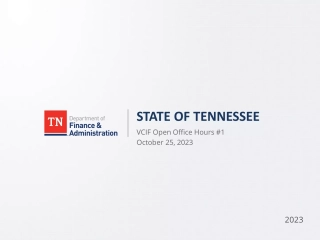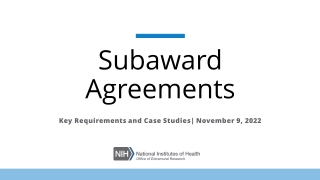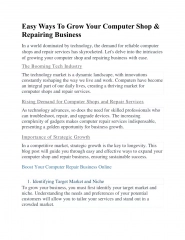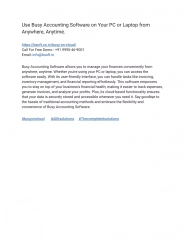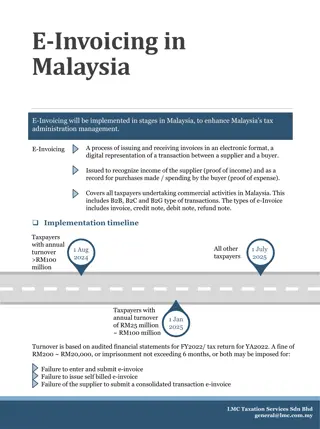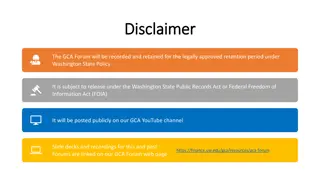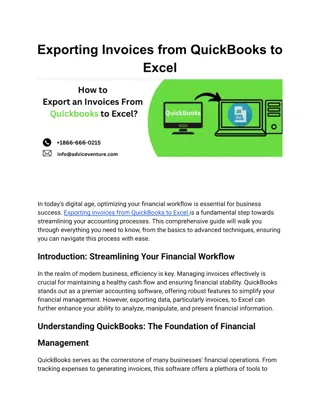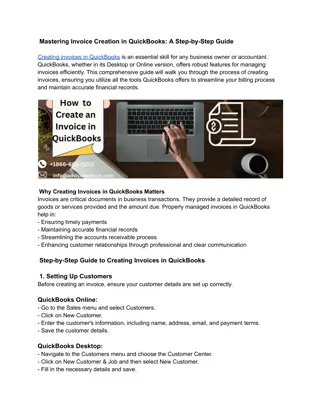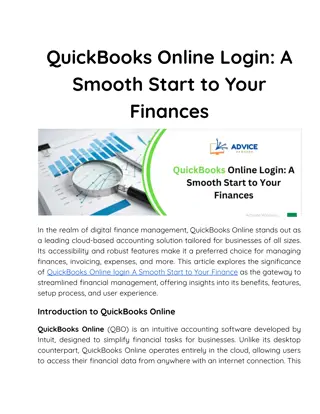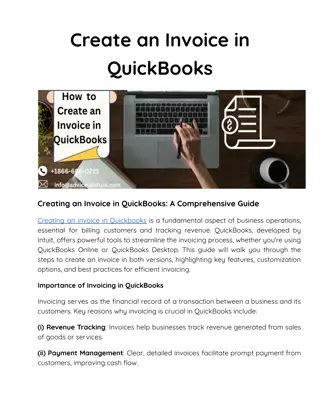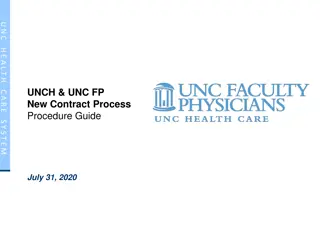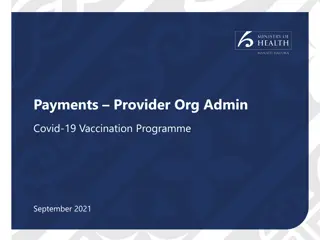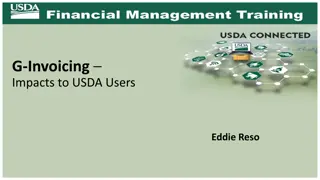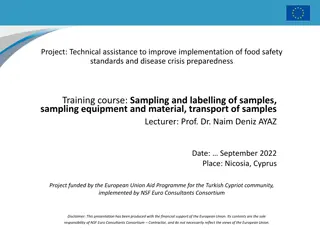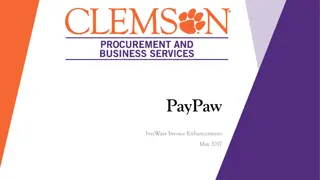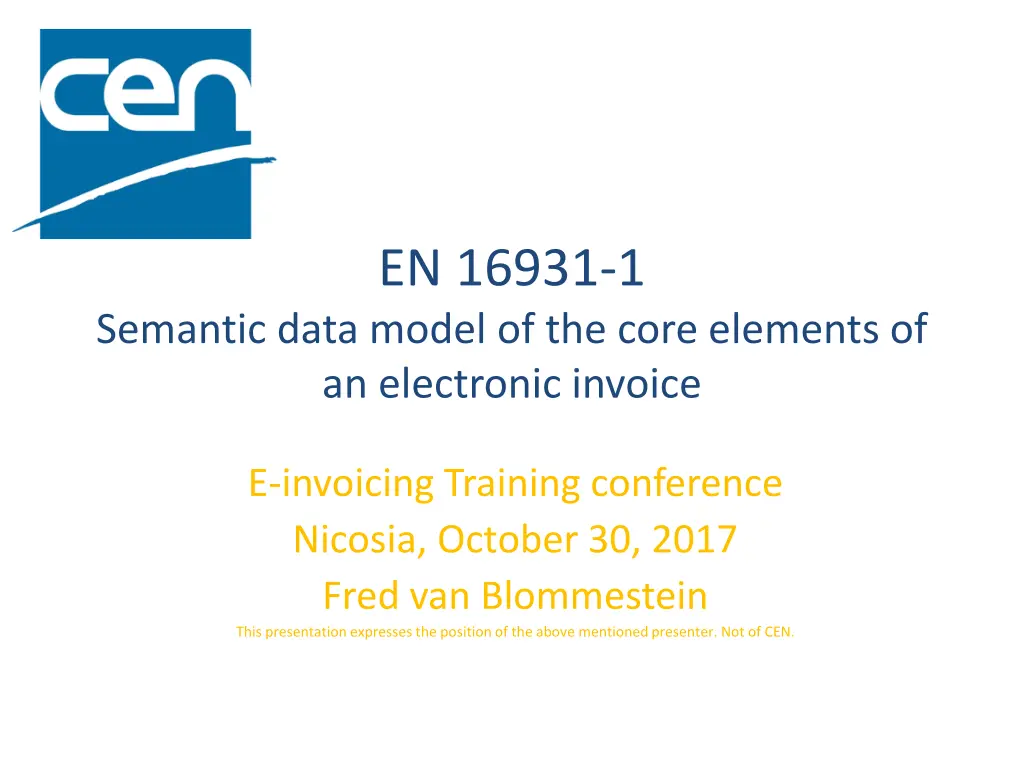
Semantic Data Model of Electronic Invoices: EN16931-1 Overview
Explore the core elements and processes of electronic invoices according to EN16931-1, including semantic data models, invoice functions, and business rules. Learn about the principles guiding these invoices and their versatility across sectors.
Download Presentation

Please find below an Image/Link to download the presentation.
The content on the website is provided AS IS for your information and personal use only. It may not be sold, licensed, or shared on other websites without obtaining consent from the author. If you encounter any issues during the download, it is possible that the publisher has removed the file from their server.
You are allowed to download the files provided on this website for personal or commercial use, subject to the condition that they are used lawfully. All files are the property of their respective owners.
The content on the website is provided AS IS for your information and personal use only. It may not be sold, licensed, or shared on other websites without obtaining consent from the author.
E N D
Presentation Transcript
EN 16931-1 Semantic data model of the core elements of an electronic invoice E-invoicing Training conference Nicosia, October 30, 2017 Fred van Blommestein This presentationexpressesthe positionof the above mentionedpresenter. Not of CEN.
Approach EN16931-1 Process models Invoice functions Semantic model
Core invoice Designed for a limited set of processes: Invoicing of deliveries of goods and services against purchase orders, based on a contract; Invoicing deliveries of goods and services based on a contract; Invoicing the delivery of an incidental purchase order; Pre-payment; Spot payment; Payment in advance of delivery; Invoices with references to a despatch advice; Invoices with references to a despatch advice and a receiving advice; Credit notes or invoices with negative amounts, issued for a variety of reasons including the return of empty packaging; Corrective invoicing (cancellation/correction of an invoice); Partial and final invoicing; Self billing. Other processes may be supported as well
Semantic model About 160 elements in 33 element groups Some 25 mandatory elements Each element has a: Name Definition Cardinality (mandatory/optional/repeating) Datatype 9 datatypes: amount, unit price amount, quantity, percentage, identifier, document reference, code, date, text, binary object
3 types of rules Integrity rules (mainly cardinality definitions) Conditions (dependencies between elements) VAT rules
Principles Core invoice is not sector specific Limited number of information elements that are commonly used Sufficient for all legal and most commercial requirements Straight-through processing Core invoice can be processed by ordinary invoice processing systems Sector specific information can be: Included in free text or attached as additional documents Included in sector specific extensions (outside scope of EN)
Features and limitations One order, one delivery per invoice Yet: invoice period at line level as well Credit notes and negative invoices are allowed VAT and non-VAT taxes Types of attachments are limited (pdf, png, jpg, csv, xslx, ods) Compliant to VAT directive Textual payment terms 3 Payment methods, pre-payments
One order-one delivery-one invoice Easier to process Automatic validation In case of dispute: payment of only one delivery is held back Periodic invoicing is still possible But no reference to individual deliveries Periods on header and line level
Special cases Part- and final invoices VAT reverse charged Continuous supply Goods identification Invoice- and delivery addresses different Payment penalties / allowances Allowances and charges Header Line
Process integration The invoice is towards the end of the transaction Automation of catalogs and orders is probably much more profitable UBL- and UN/Cefact messages exist CEN/TC440 even integrates pre- and postaward Post-award Pre-award Supplier and contract management e-Submission (e-Attestation) e-Awarding (e-Auction) e-Request (e-Catalogue) Planning e-Notification e-Access e-Evaluation e-Contract e-Ordering e-Fulfilment e-Invoicing e-Payment

